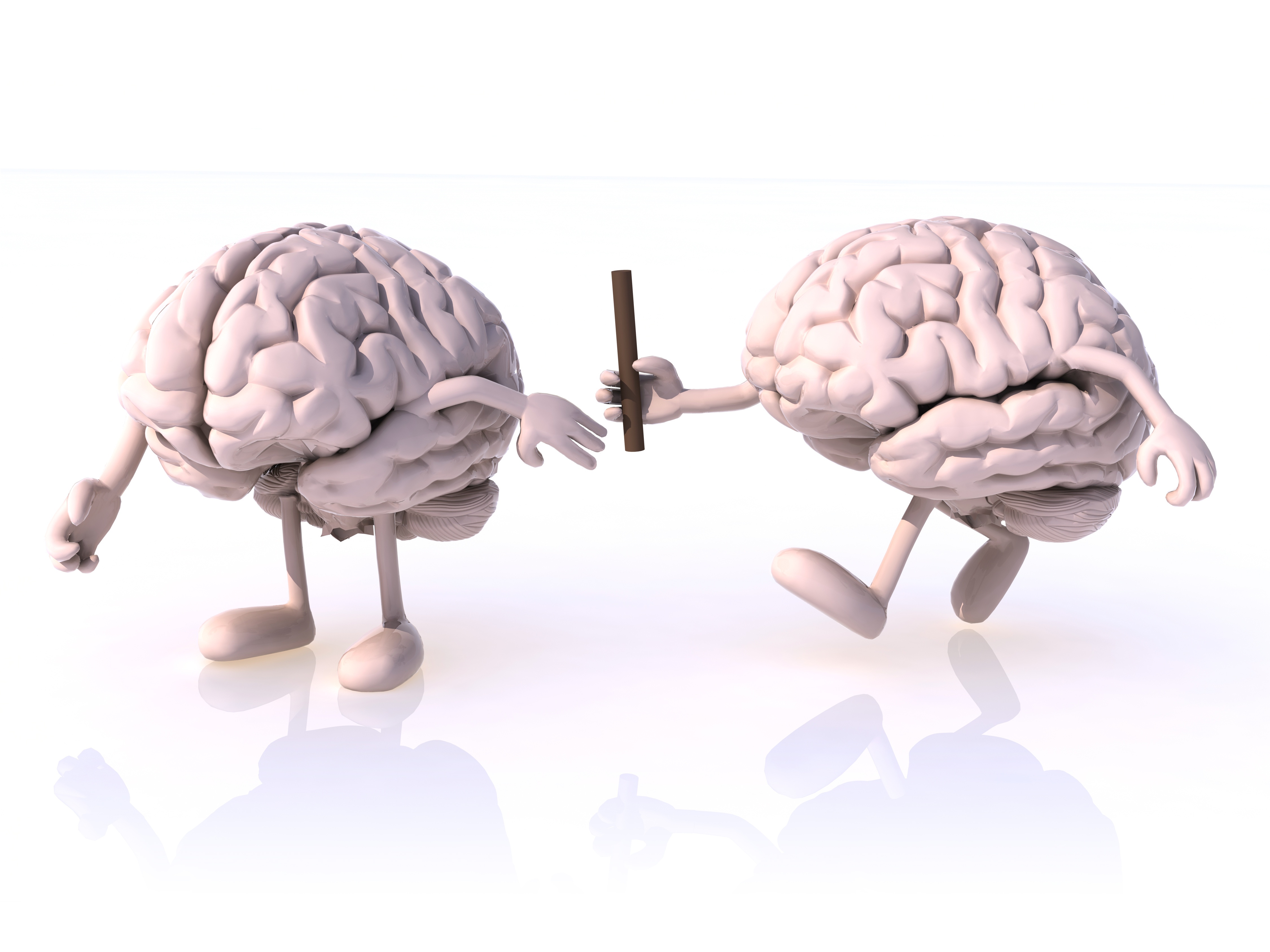Some people claim that they are excellent multi-taskers. I’m not one of them. I believe multi-tasking is a flawed concept, and is more often an excuse for not devoting proper attention to any one thing. The results of tasks that have been completed while multi-tasking are generally poor. There’s a reason for this – the brain cannot actually focus on two things at once.
With the constant pinging of technology gadgets, the world seems to be multi-tasking 24/7 these days. Rarely can anyone be still and give their undivided attention to one person, one task, one moment at a time. And when it comes to working in an office, distractions are plentiful and the temptation to multi-task can be strong. I suggest that we expose multi-tasking for the myth that it is, and resolve to do better – to single-task our way to a more efficient and productive work and life.
A Look Inside the Multi-Tasking Brain
Numerous studies have been conducted on the brain scans of people who complete a task while they are distracted by another task. I’m not talking about simple tasks like eating a snack while cleaning the kitchen. I’m talking about tasks that require processing and interpretation of cues – and that includes engaging in a meaningful conversation. The results show the damaging effects of multi-tasking not only on task completion but also on the individual’s brain and ability to learn, concentrate, recall information, and regulate emotion.
The studies get a bit academic, so I’ll break it down pretty simply: the part of our brain responsible for focus is the prefrontal cortex. When we give our attention to one task at a time, both halves of our prefrontal cortex are engaged and the mental chain of command is intact. When we add another task to the mix, the brain splits in half. The right half of the prefrontal cortex takes care of one task and the left half takes care of the other. Both sides of the brain work independently and chase their own goal and reward. Try to add in a third task? Forget it. The brain has only two hemispheres for managing tasks!
When you attempt to do more than one task that requires attention at a time, you are not really multi-tasking. You are “switch-tasking.” You are switching your attention back and forth from one task to another. You are really only half there, half engaged, half present, half efficient. Or you are devoted to one task in that moment and neglecting the other. Sure, you may complete both tasks, but the quality of one, or both, will suffer.
Still not convinced? Have you ever been on a conference call and realized you missed the last few minutes of the discussion while you responded to an e-mail? Or made a driving error because you were deep in conversation, or worse yet, because you glanced at your phone? Or had to reread paragraphs in a book as if you were reading those paragraphs for the first time? You were.

Is Anyone Paying Attention?
In a 2005 article, Dr. Edward Hallowell describes what he calls “Attention Deficit Trait” and claims that it is rampant in today’s business world. A 2007 study estimated that extreme multi-tasking costs the U.S. economy $650 billion a year in lost productivity. A quick Google search will produce article upon article describing the way multi-tasking increases stress levels, impairs memory, and decreases performance, among other negative effects.
So what do we do about this? Dr. Hallowell urges us to “creatively engineer our environments and our emotional and physical health” to combat the hyperkinetic environment in which we live. This begins with a commitment to limit multi-tasking. In this article, I will focus (without distraction!) on three simple ways to do this at work, with takeaways for life in general.
Tips for Combating Multi-Tasking at Work
As you approach your “to do” list, here are some simple tips to help you cross the tasks off without sacrificing quality:
Switch to Single-Tasking
When we switch between tasks, it takes some time for our attention to catch up to the task at hand. Think of it this way – our brain is still working to tie up loose ends on the previous task, even if we don’t consciously realize this. The more we switch back and forth, the more this “catch-up time” adds up throughout the day. And this equals lost productivity. By focusing on one task at a time without constant switching, you can minimize the number of times the attention delay comes into play, which will boost your productivity.

Your Mind as a Relay Race!
Keep in mind that reading and responding to e-mails or instant messages while trying to focus on another task can break the flow and destroy your single-tasking mojo. Resist the urge to deal with everything in real time. Unless an urgent message comes in, you’re probably fine waiting an hour or two to respond. Which leads to my next point…
Set your Status to Do Not Disturb
While it’s probably not appropriate to keep your IM status set to Do Not Disturb eight hours a day, there are times when it is perfectly appropriate to let others know that you are deep in concentration and should not be disturbed. Use the Do Not Disturb status wisely. Chances are, if you can focus on the task at hand for a solid hour or two without interruption, you’ll soon have time for all the other questions and tasks that would have only been viewed as pesky interruptions otherwise.
Try Interval Tasking
We’ve all heard of the circadian rhythm, but have you heard of the ultradian rhythm? Simply put, the ultradian rhythm is the basic rest-activity cycle that dominates your awake time. The upshot is that your brain can only focus for approximately 90-120 minutes at a time. It then needs a break in order to return to higher levels of alertness. Yes, you have your ultradian rhythm to thank for that lull in concentration every 90-120 minutes or so! During this cycle, your brain wave frequencies rise to a peak level of performance, then sink to a trough. This is when it’s time to take a break. Consider tackling some of your larger tasks for 90-minute stretches, without any switch-tasking, then take a break or switch to a less demanding task for 10 minutes or so before diving back in for another 90 minutes. Your ultradian rhythm will thank you.
A Word to Managers
It is vitally important for managers to recognize human limitations for intellectual labor. Just as you wouldn’t push an employee to work under taxing physical conditions for too long without a break, you shouldn’t push your employees to the point of mental exhaustion either. Allow time for employees who are primarily deskbound to take breaks every 90 minutes or so. The breaks can be ten minutes to catch up on e-mails or company news, to switch to a less taxing project, or to get up and collaborate with other employees. When planning your team’s project schedules, honor the basic human need to refresh, and plan for a buffer to give your employees the mental breaks they need.
If You Only Pay Attention to One Point…
If you take away only one point from this article, it’s this: pay attention to one thing at a time. Whether it’s a conversation or a book or a household chore or a work task, the most efficient performance and high-quality results are obtained when we focus on one task – or one person – at a time. You will likely see your productivity soar, your stress decline, and your enjoyment increase. So put your phone down when someone is talking to you... save the e-mail reply till your teleconference has ended… catch up on your instant messages after you have dedicated 90 minutes to the report in front of you. Our tasks, and the people in our lives, deserve this undivided attention.









.jpg)


.jpg)
.jpg)
-1.jpg)
.jpg)
.jpg)
.jpg)
.jpg)
.jpg)

